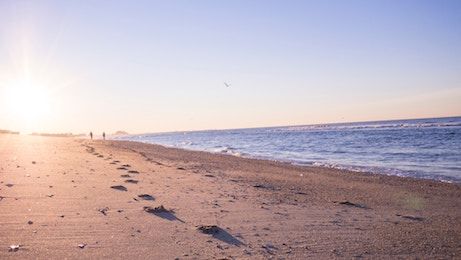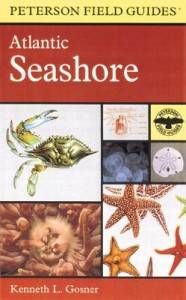
Peterson’s Field Guide to The Atlantic Seashore by Kenneth Gosner Is Actually A Guide to Life
Elizabeth Bastos is a nature contemplative.
Twitter Handle: @elizabethbastos
There was a time when I wanted to be A Marine Biologist SO HARD. It was in the halcyon interim of ignorance that was my Smith sophomore year when I was taking Invertebrate Zoology (and loving it), and before I had made full realization of just how bad I was at math by taking Calculus a year later and dropping out, whimpering, with my vestigial tail between my legs. “Her Deepness,” Sylvia Earle, had been my hero. I was crushed. I would never braid Carl Safina’s beard on any leg of any oceanographic cruise! Fie! Math! Fie!
What is left over, vestigially, from my #marinesciencemathfail is a passion for field guides, specifically for the inadvertently AMAZINGLY USEFUL guide to life for me that is Peterson’s Field Guide to The Atlantic Seashore. It is my preferred scripture for lectio divina, a practice of reading intended to promote communication with God.
I’m not a traditionally religious person, but Peterson’s Field Guide to The Atlantic Seashore is scripture for my kind of faith: nerdy, wordy, nature-worship-y that is spirituality-adjacent (like your New Age-y Aunt Josephine, you’ll find me in many a muumuu). There is Life-affirming poetry in Peterson’s Field Guide to The Atlantic Seashore and there are lessons to be learned.
Turn to Plate 33 and contemplate “Miscellaneous Plankters” such as the “salp,” the “naked sea butterfly,” and the “shelled sea butterfly.” You share your world with miscellaneous plankters, haven’t you always suspected as much? The book is a confirmation. My college boyfriend was an Elegant Hydromedusa, “erratically common North to Cape Cod.” OMG. Totally. Sometimes my kids are Greedy Isopods that “may bite if carelessly handled.” In middle age I suspect I share commonalities with “Rockweeds and Other Brown Seaweeds” in that we, have “runty, quiet-water variants.”
There is a vast and growing store of information about the natural world and it could be overwhelming. But here is a 285-page book that longingly wants to be your Guide. You have a Guide, you lucky thing. It is so comforting. You are on the hero’s journey! You are empowered to figure things out like Intertidal Zonation and Sea Beach Zonation and because of that, the extrapolated meaning is you can succeed in Life because there are infinite variations.



















